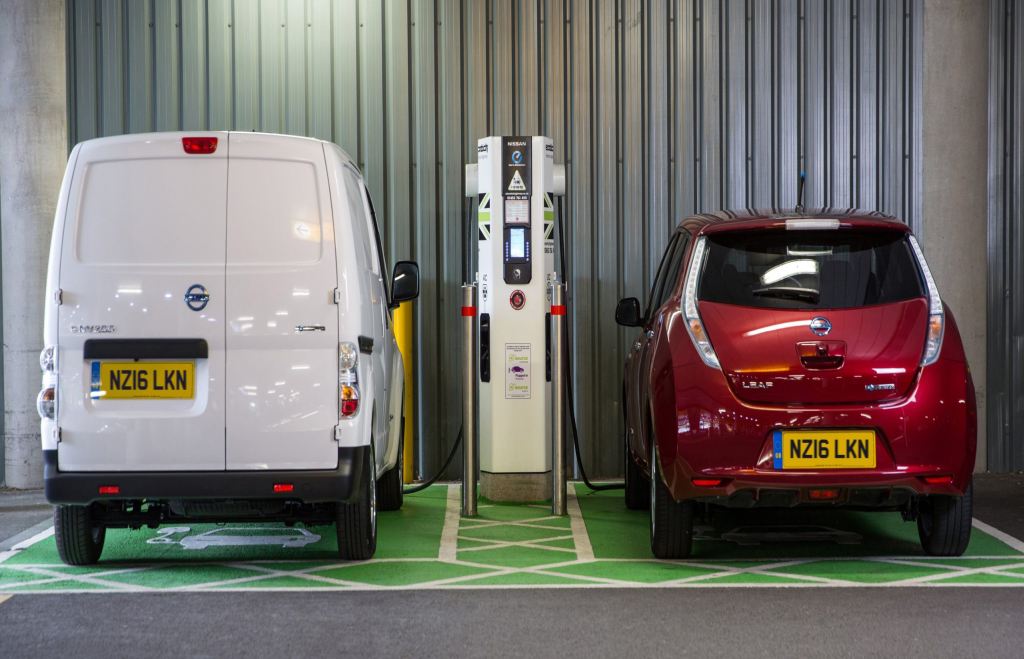Glass’s Live Retail tool, gathers a number of different types of retail data – these include not just the length of time a vehicle spends on the forecourt, but also the asking price when initially listed as well as its final asking price. By collating these data streams, Glass’s can analyse trends and build up a true picture of the used car retail market.
At the beginning of 2019 the Glass’s team reported that whilst Internal Combustion Engine (ICE) cars had performed relatively consistently over the preceding four years, Battery Electric Vehicles (BEV) had shown noticeable improvements in the key metrics of ‘days to sell’ – the number of days a car spends on the retail forecourt – and ‘asking price discount’ – the amount of discount applied between the first and last advertised asking prices.
BEVS had gone from much higher ‘days to sell’ and ‘asking price discount’ metrics than ICE at the beginning of 2015 to effective parity by the start of 2017. Given the growing interest in all forms of Alternative Fuel Vehicles (AFV) it seemed reasonable to expect those trends to continue. However, since that report they have clearly reversed, suggesting retail demand for used BEVs has reduced as they are taking longer to sell and require more discounting:
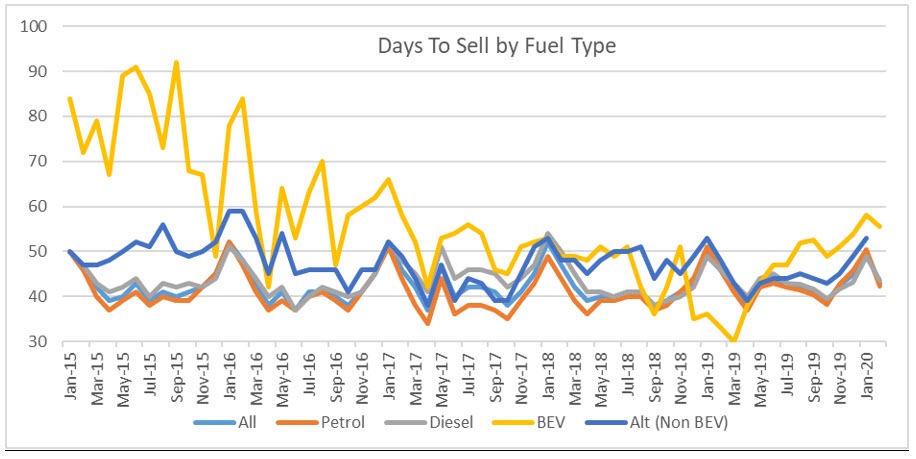
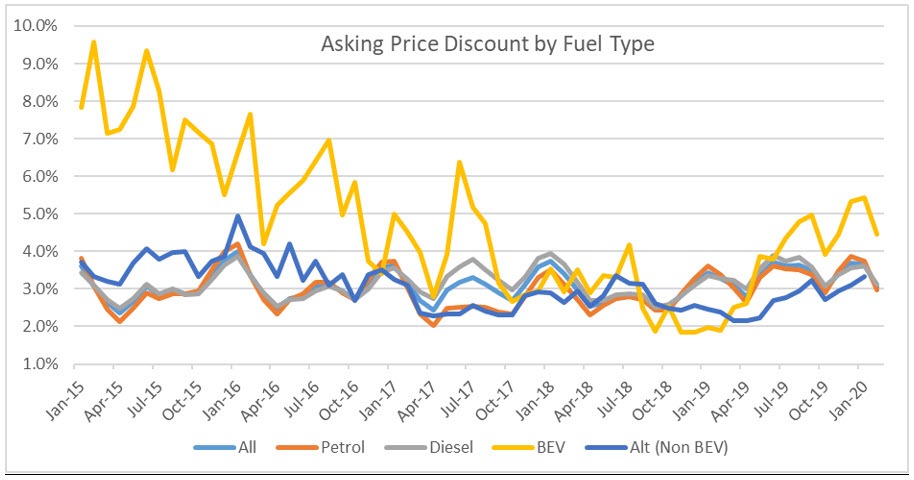
Usually this kind of reversal is due to a growth in supply sufficient to exceed demand. Whilst it is true that the volume of BEVs sold in February 2020 was an impressive-sounding 138% greater than the number sold in January 2019, the 475 BEV sales only represented 0.48% of the total number of retail used car sales in February.
This low volume should not represent oversupply given the apparent interest in AFVs and BEVs in particular, so it is unclear at this stage why the key used retail metrics are behaving in this way. For example, there have not been any changes to legislation that would suppress demand. If anything, the introduction of low emission zones and similar restrictions should promote the uptake of BEVs.
What is noticeable is that there has been a sizeable jump in the average final sale price of used BEVs. It was around £12-14,000 from the start of 2015 until October 2018, when it began a rapid rise, reaching £21,000 by June 2019. It has continued to climb since then, albeit at a slower rate.
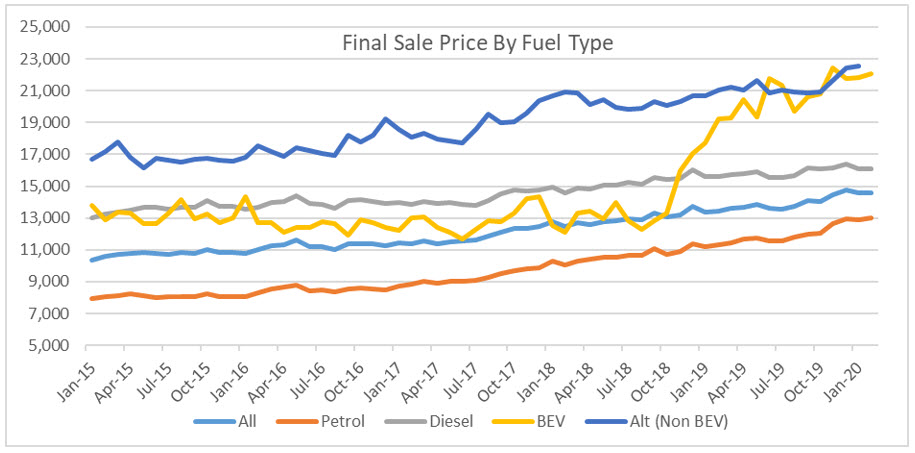
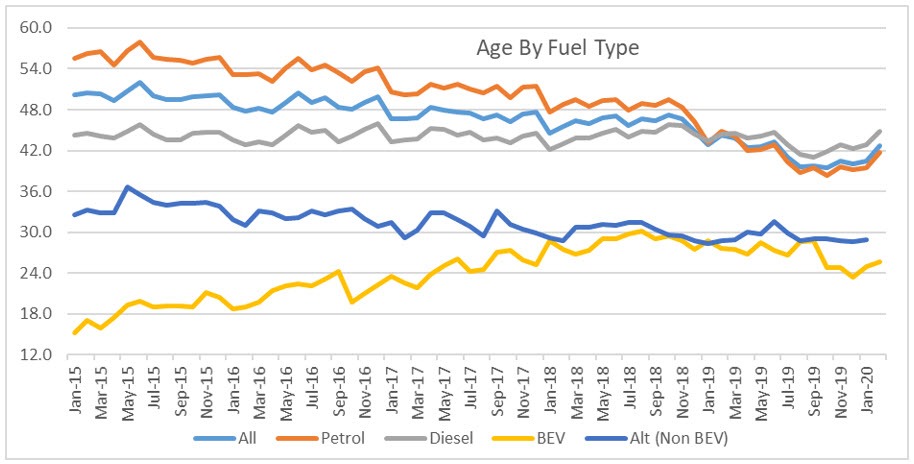
Over the same period, the average age of BEVs has also increased, from 15 months in January 2015 to around 25 months in February 2020. An increase in vehicle age usually brings with it a reduction in value, so the only conclusion that can be drawn is that the vehicle mix has changed to include much more expensive vehicles. This rise in sale price coincides with the increase in stocking times, suggesting that the more expensive BEVs take longer to sell and require more discounting to do so.
New BEV sales have grown rapidly over the last 12 months and that growth rate is likely to increase going forward – indeed it must if we are to meet the targets laid down by the Government. This will, of course, lead to a rapid growth in the number of used BEVs entering the market so every effort must be made to ensure there is enough used retail demand for them if there is to be any hope of them becoming more financially viable, both for the manufacturers as well as the owners themselves.

 Close
Close